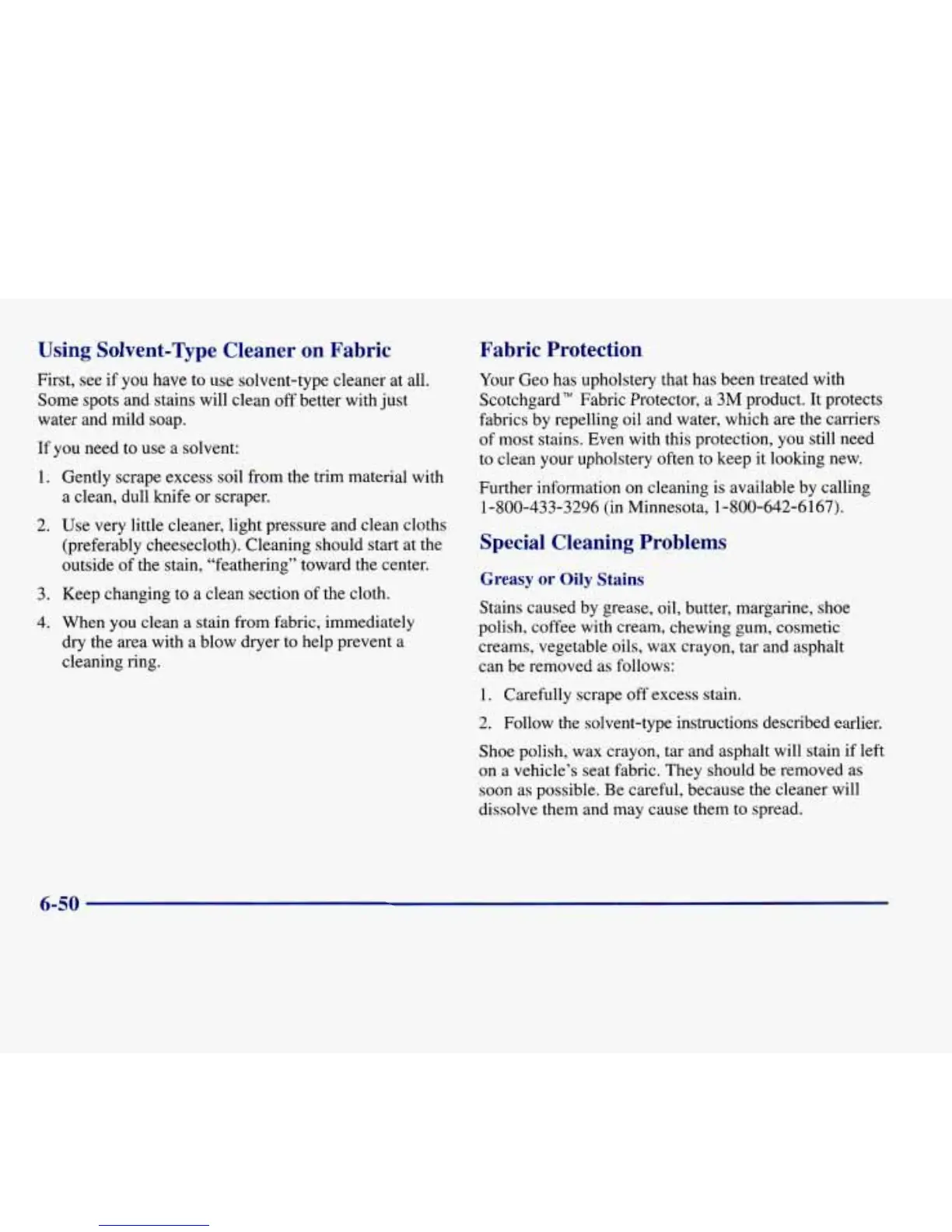Using Solvent-Type Cleaner
on
Fabric
First, see if you have to use solvent-type cleaner at all.
Some spots and stains will clean off better with just
water and mild soap.
If you need to use a solvent:
1. Gently scrape excess soil from the trim material with
2.
Use very little cleaner, light pressure and clean cloths
(preferably cheesecloth). Cleaning should start at the
outside
of
the stain, “feathering” toward the center.
a clean, dull knife or scraper.
3.
Keep changing to a clean section
of
the cloth.
4. When you clean
a
stain from fabric, immediately
dry the area with a blow dryer to help prevent a
cleaning ring.
Fabric Protection
Your Geo has upholstery that has been treated with
Scotchgard” Fabric Protector, a
3M
product. It protects
fabrics by repelling oil and water, which are the carriers
of most stains. Even with this protection, you still need
to clean your upholstery often to keep it looking new.
Further information on cleaning is available by calling
1-800-433-3296 (in Minnesota, 1-800-642-6167).
Special Cleaning Problems
Greasy
or
Oily
Stains
Stains caused by grease,
oil,
butter, margarine, shoe
polish, coffee with cream, chewing gum, cosmetic
creams, vegetable oils, wax crayon, tar and asphalt
can be removed as follows:
1. Carefully scrape off excess stain.
2.
Follow the solvent-type instructions described earlier.
Shoe polish, wax crayon, tar and asphalt will stain
if
left
on a vehicle’s seat fabric. They should be removed as
soon as possible. Be careful, because the cleaner will
dissolve them and may cause them to spread.
6-50
